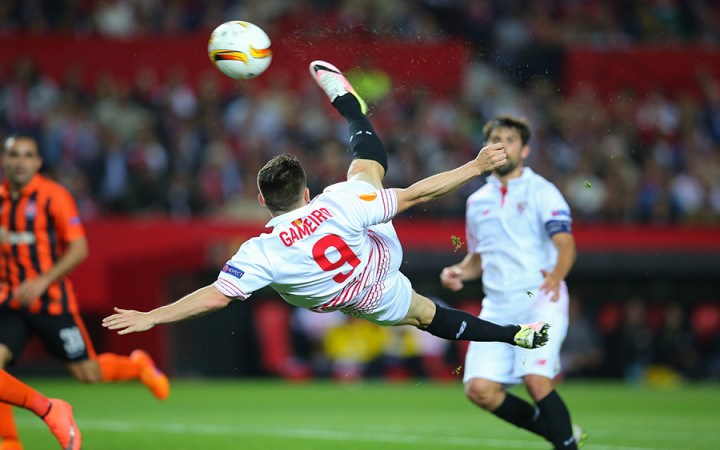Today’s Wonder of the Day was inspired by Grace. Grace Wonders, “What is the physics behind different kicks in soccer?” Thanks for WONDERing with us, Grace!
Do you love to play soccer? If you do, then you've probably daydreamed from time to time about scoring the winning goal in a big game. Perhaps you've even pictured exactly how it would happen.
As your team streaks down the pitch on the attack, you position yourself in the middle of the box with your back to the middle of the goal. One of your wingers creates just enough space to whip across in your direction.
Unfortunately, the pass is high. In fact, it's a bit over your head. Without thinking, you instinctively arch your back and throw your body backwards into the air.
Your legs make a scissors motion as your right leg swings upward, makes contact with the ball, and blasts it past the keeper into the upper corner of the goal. The crowd erupts into raucous cheers to celebrate your game-winning goal!
There are probably very few soccer players who haven't dreamed of scoring a goal on a bicycle kick. It's a feat even more impressive than a hat trick. There's just something special about seeing a player jump into the air feet first to kick the ball backwards over his or her head.
You can try to describe a perfect bicycle kick, but somehow words struggle to convey the magic found in this unique combination of grace, beauty, and athletic prowess. Indeed, few players possess the skill and pure athleticism required to execute a bicycle kick.
In soccer, few moves can compare to the bicycle kick, perhaps because they're so rare. It's not often that you're able to witness human error (the bad pass that almost always precedes a bicycle kick) immediately corrected by an amazing feat of human athletic skill.
Given how special bicycle kicks are, it should come as no surprise that there's some argument about exactly who invented the bicycle kick. Some soccer historians claim Ramon Unzaga invented the bicycle kick in 1914 in Talcahuano, Chile.
Others believe the bicycle kick may have been invented as early as 1892 in Callao, Peru, in a game against British sailors. Even legendary Brazilian striker Leonidas claims to have invented the move in 1932.
Regardless of who invented the bicycle kick, it has been a special part of soccer for a century now. When a player successfully executes a bicycle kick in front of the goal, the resulting shot can be nearly impossible for a keeper to stop.
Why? Scientists claim it's because of the physics involved in a bicycle kick. Since the player's body is high above the ground and angled upward, the kicking leg has a greater distance than normal to travel before hitting the ball.
This allows the leg to gain momentum and increases its angular velocity. The result: a forceful kick that sends the ball toward the goal more quickly than normal. Only goalkeepers with exceptional reflexes might be able to react quickly enough to block a shot from a bicycle kick.




